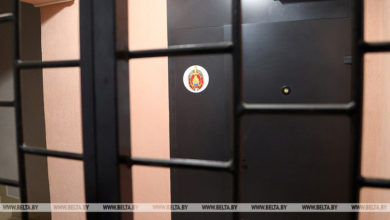History being rewritten with archaeological excavations at train station in Istanbul | Partners | Belarus News | Belarusian news | Belarus today | news in Belarus | Minsk news | BELTA

Photo: aa.com.tr
ISTANBUL, 13 October (BelTA – Anadolu Agensy). – History is being rewritten with archaeological excavations at Haydarpasa Train Station in Istanbul’s Kadikoy district, which was known as Chalcedon (the Land of the Blind) in ancient times.
The excavations, which have been continuing for nearly three years, shed light on the history of Kadikoy from the 5th century BC to the early era of the Turkish Republic.
During the excavations carried out jointly by the Ministry of Culture and Tourism and the Ministry of Transport and Infrastructure on 300 decares of land just behind Haydarpasa Train Station, remains from the Classical, Hellenistic, Byzantine, Roman, Ottoman and Republican periods were unearthed.
Speaking to Anadolu Agency, Rahmi Asal, director of the Istanbul Archaeological Museum, said they meticulously carried out the work in the area behind the train station with a large team.
“The area we work in is in the western port of Chalcedon, the ancient name of today’s Kadikoy. Of course, very important remains and finds were unearthed. One of them is a private residence with opus sectile flooring. It’s something we evaluate together with its bath dated 5th century A.D.,” he said.
A 5th century church built in the name of Saint Bassa was also discovered, said Asal, adding the skeletons of 28 people from that era were also unearthed.
“Approximately 12,000 gold, silver and bronze coins were recovered, which is an incredible figure especially for Istanbul. The most important one is a coin that dates back to the 5th century B.C., which is thought to be one of the first coins of Kadikoy. The coin had been found before in other places, but it is the first time we’ve seen it in this area.”
Asal said that Haydarpasa Station is one of the most symbolic works of art of the city, and archaeologists, art historians and citizens should prioritize protecting it.
“The station should continue to function. We must integrate our archaeological remains into it. This is how we can make the most out of it.”
He said the excavations have reached a certain stage, and now they need to start working on the preservation of the remains together with the excavations in the area.
The number of workers at the site decreased due to the coronavirus pandemic but has now reached 400 people, said Asal, adding they continue to work with 15 to 20 archaeologists.







